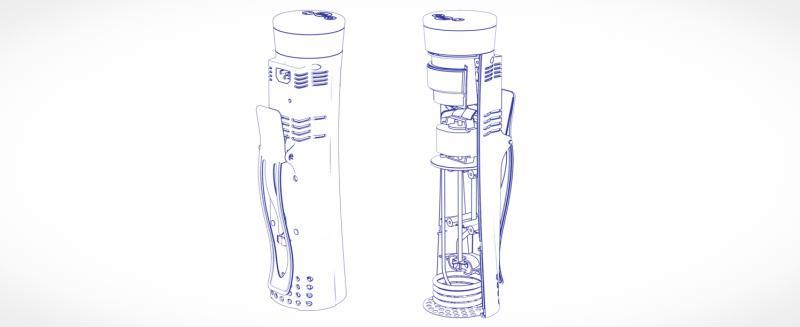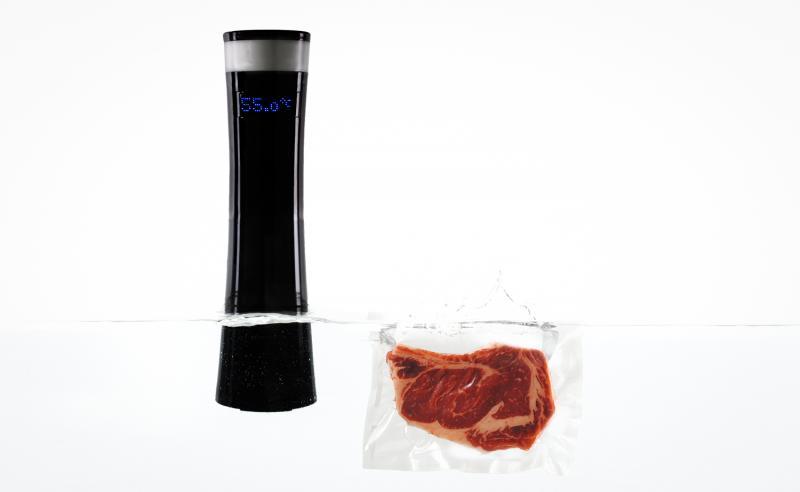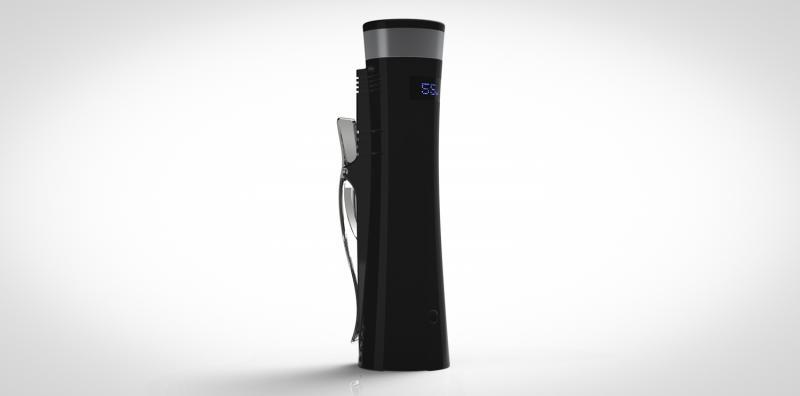Search the Community
Showing results for tags 'Modernist'.
-
I tried to figure it out from the sv thread but got lost in all the information. Hope it is ok to ask here. I have 2000 g piece of brisket. Want to cook it for Saturday or Sunday. I cannot finish it on BBQ - crappy weather in Western Europe. Also, i made this lovely sauce/marinade, mix of mustard, ketchup, soy sauce, chilli oil and pickled jalapenos, fully smooth. Never made brisket before, and found some SV pointers for 55C for 72 hours. I wanted to rub my sauce on the meat but what is the best time to do it? Before cooking, anc cooking in sauce? Or few hours before finishing? I really do not want mealy meat. But how to get Maillard reaction going? I saw a method from ideas in food, meat and sauce, wrap tightly in foil and 8 hours in 120C oven. What would give me a more flavourful result, oven or SV? Thanks, Bojana
-
I've been making cheese for a few years now, but it's a challenging hobby because it requires so much precision and consistency. The good news for home cheese makers is that Sous-Vide circulators are ideal for this. They actually make the task ridiculously easy now. I recently purchased an Anova Circulator, and for the first time ever, in my years of making cheese, there were some "set-it-and-forget-it" steps. A welcome break especially since a typical cheese can take anywhere from 5 to 8 hours to make (plus pressing and aging, but we won't get into that here). I included a pic of my current setup. The Anova did a wonderful job on my first try. The 1kw heater and the 12L/m empeller played are an important part for temp control, and cooking times. A weaker model probably would not be enough. My current setup specs are : - Carlisle 12 x 18 food container - Stainless steel 6" half pan (cheap gauge... for better temp response... the thinner the better) - Anova Circulator Only one problem encountered with this setup: The half pan floats when either cheddaring, acidifying or washing curd... Currently looking for a solution that would keep the half pan in place. Anyways, just wanted to see if there's there's anyone else out there with a Sous-Vide setup as a cheese vat. Maybe we can give each other some pointers. Happy cheese making!
-
I'm no kind of pastry chef or even a particularly keen pastry eater. (I tend towards the savoury rather than the sweet.), but I thought this article by the BBC would be interesting to all the eG pastry chefs. http://www.bbc.co.uk/news/world-europe-24609525. Nice to see innovation.
-
About once a month, we teach a date-night class on making a steak dinner. It's based around classic steakhouse dishes (creamed spinach, Caesar salad, honking-big Porterhouse, etc.), but we add a few twists. One of those is cooking tenderloin steaks sous-vide and finishing them in a deep fryer. The first few times we did this, it was mildly interesting for our students, but in the last three months or so, we've been getting more and more questions about sous-vide techniques and what's required to get started in it. It used to be easy to give advice: 1) if you're the do-it-yourself type, get a controller (or build one), a simple slow cooker, and a FoodSaver; 2) if you're not into DIY, buy a Sous Vide Supreme package. (Either suggestion is accompanied by a pitch for eG Forums, of course.) Now it's not so simple. Between Anova, Nomiku, Sansaire, Underground (which is also working on a $900 chamber vacuum), and the Polyscience offerings, there are -- all of a sudden -- lots of choices. Which makes me wonder what's going to happen in the consumer market. I suppose Sous Vide Supreme can continue to sell their units at premium prices for a while, because it's got a certain appeal for those who like neat counters and simple solutions. Meanwhile, Polyscience can maintain pricing for only so long, based on their reputation in professional circles. It seems unlikely to me, though, that things will stay the way they are, or even that all of these companies will survive. For example, a while back, we were contacted by a startup who asked for advice on how to create a presence in eG Forums. They had a very attractive product -- something like Dork, but with the looks of the Anova. Six months ago, their projected price of 200 euros didn't seem too far out of line, considering its ergonomics and stylish appearance. Then the Anova and Sansaire showed up, and we never heard from those folks again -- most likely because they realized that the market had fallen out from beneath them. If you could advise SVS or Polyscience -- or any of these companies -- what would you tell them?
-
Hi guys, I was hoping someone here could help me with my little experiment. From what I've read 75C is a good temp for scrambled eggs, and most recipes say they'll be done in like 25-30 minutes. I've played around with a recipe which fits my diet and finally got the consistency right. However, it takes a looong time (upwards to two hours) and once it starts cooling down a bit it separates. Nothing much, but I need to massage the bags to reabsorb the liquids. I don't mind the cooking time as I'm making two days worth in each ziploc-bag and prepare it for the whole week, but I'd really like to get the consistency perfect. This is the recipe I'm at now (for one bag / two days worth) * 7 large eggs (about 450g) * 50g creme fraiche * 100g sliced ham Is there too much liquid in it making it require so much time? Is it the temperature causing it to separate? I've tried 74C, but it still separated. Any feedback would be greatly appreciated! Cheers, Lars
-
Hi there, I recently acquired a second hand vitamix drink machine (VM0104), blending station Touch and Go2 (configured with stablizing pad for advanced container) (VM0122) from a dealer. The motors for the blenders appear to work fine, but they had worn out drive assemblies and damaged blade assemblies which will need to be replaced. I intend to replace these with replacement parts I can order online. In the course of looking for the right replacement parts, I discovered that the drink machine, which comes with a ice blade OEM, can actually be fit with a stabilizing pad for the advanced contain and can possibly use the advanced container with the advanced blade. It can apparently also be fit (using the stabilizing pad that comes with the units I bought) with a normal container with a wet blade (like the vita prep), or a container with a dry blade. While I know the ice blade is in the original assembly, I think the wet blade may be more suitable for modernist cooking. I am considering getting several different containers with the ice blade, wet blade and dry blades for various applications and would like some advice on whether anyone has tried using the machines with different blades? I am also considering upgrading the lot to advance containers (means I have to buy advanced stabilizing pads for my drink machine) if the advanced blade/container works better? From what I have read from various sources on Google, the machines seem to differ only in 1) ability to change speed settings (drink machine limited to high/low, whereas vitaprep has a knob), 2) power (some 3 hp some are 2hp), and for the XL model, a different drive assembly - so not relevant for my purpose). Can anyone help with the above? Hope to receive proper advice before I make the considerable outlay on the accessories.
-
Hello first post here! I recently purchased a poly science immersion circulator and decided to do beef bourg sous vide. I had a look at a few posts on here and decided to try it at 61c for 8 hours but it was still tough and still tough after 24 hours! The meat used was chuck. Thanks in advance for any help
-
I recently had the wonderful opportunity of photographing a story called Captain Cooks for Vogue magazine (India edition). The magazine enlisted 15 top chefs from around the world to share 1 of their recipes that define the year ahead for them. Ferran Adria's Mint Pond was one of them... As one of the few dishes (that I know of) that invoke the sense of sound whilst eating, it was especially hard work to freeze the pond just right, so as to create a hard ice layer on top, whilst maintaining liquid below. A bit of dry ice between the black pebbles helped create the smoke/mist to add to the cold feel. The full story is available on my blog at http://foodphotography.in/celebrating-the-worlds-top-chefs-with-vogue/ Bouquets and Brickbats welcome!
-
I'm planning to sous vide steaks for a quick campout; I would cook them sous vide, and pack them up in the morning of the campout. If I sear, then eat them in 12 hours, and keep them in the vacuum bag, do I have to freeze them, or can I just let them get to room temperature?
-
Home cook: went to use vac tonight and it won't seal. Anybody got an idea for a troubleshoot?
-
After trying in vain to convince an unnamed large chemistry supply company that I was planning to use some Czapek-Dox agar for making koji for sake (well, for propagating A. oryzae for making koji and M. purpureus for red koji), and after being flagged in Texas for purchasing a Soxhlet extractor (incidentally made and shipped from New York, which as far as I know is not in Texas) to try to concentrate extractable compounds from mint and peppers (maybe catnip for the kitties if they behave), I was wondering if anyone out there has found sources for lab equipment for culinary use where the proprietors do not immediately assume that a shipment of lab equipment to a residence is for a clandestine psychogenic substance laboratory? Yes, I ferment mind-altering wine and sake, in full compliance with 27 CFR 24.75, 27 CFR 25.205, and state law. I can imagine that for the authors it was much easier to get what they wanted to play with since they were shipping to a business, but for those of us who are playing with food at home it is unfortunately a different story. Modernist cooking is hard enough when people give you odd looks for using something called "transglutaminase" or "sodium citrate" in their food, but that is nothing compared to the interrogation one gets regarding purchasing a small heating mantle or standard taper round bottom flask.
-
Hi Modernists, Dairy including butter (even lactose-free) make my stomach turn upside down. However, using casein and lactose-free clarified butter doesn't. Can butter be substituted with clarified butter in the recipes (e.g. caramelized carrot soup) or does it have to be butter? Cheers, Juho
-
Hi chaps I've just bought a JML (I'm in UK) sealer, in the hope that I could blanch veg from the allotment and then keep it in the fridge for longer than in tupperware, the instructions even mentions soup but when I have tried sealing some blanched runner beans (that I'd squeezed dry) but when the vacume operates it sucks water as well as air and this gets between the two sides of the plastic bag and stops it sealing ... am I missing something please ? Roger
-
I just completed a broccoli roast from a Cook's Illustrated recipe, pretty simple: salt, sugar, olive oil, put on hot pan from 500F oven, roast for 10 min. I was surprised, I wasn't expecting much given that broccoli doesn't have complex flavors but there were subtle caramelized flavors which CI said was from the sugar. Knowing the maillard reaction is basically protein+sugar+heat=caramelization has anyone ever tried making a protein+sugar solution for roasting vegetables? I've heard of the glucose solution brushed on steak but my experience with that was that it didn't do so much. Questions I had were: 1. Glucose vs. Table sugar. Does the glucose do a better job? 2. What protein? Whey, some other thing? 3. Does it work?
-
Hello all, My Polyscience Creative Series finally came in the mail, and I've been tearing through recipes from Modernist Cuisine at Home. I was very intrigued by the technique of vacuum sealing a steak brushed with fish sauce to mimic the flavor of dry aged beef as mentioned in the section on beef. I currently have a skirt steak in the fridge doing just that, but I was unclear on the cooking process. Should the steak be removed from the bag after the three day aging period, rinsed, and seasoned at usual or should it be cooked as is? I'm somewhat leery of seasoning it as usual, due to the innate sodium content of the fish sauce but other forums have said throwing it in the sous vide as is will result in too strong a flavor of fish sauce. Given my wife's absolute disgust for the smell of the sauce as I prepared the bags, I'm trying to avoid serving her an entree redolent in that aroma and taste. Thanks in advance for your input.
-
There's a new SV circulator on Kickstarter by Scott Heimendinger, creator of the original Seattle Food Geek DIY sous vide many of us used as a reference and more recently appointed Director of Applied Research at Modernist Cuisine. It's called Sainsaire - i.e. without air, a play on "Sous Vide". The design and specs look good - 1KW heater, circulator, good clip to hold it to most containers - especially for the price: $199. With their permission I've attached some images to this post showing the general blueprint and prototype design. On the last update they've also confirmed they would do a 240V version if pledges reach $250K, which looks very likely as it's already at $214K after only two days. Kickstarter link: http://www.kickstarter.com/projects/seattlefoodgeek/sansaire-sous-vide-circulator-for-199 Main website: http://www.sansaire.com Good review with action photos over at Serious Eats: http://www.seriouseats.com/2013/08/we-test-the-new-low-price-sansaire-sous-vide-ciculator-from-modernist-cuisine.html I'm looking to replace my complex and slightly unsafe DIY unit but didn't pledge for the Nomiku as I thought it was expensive and risky. This one however seems to hit the spot and comes from a well known SV expert. Any thoughts?
-
Hi guys. I tried to pull this off a little while ago without success and was hoping to have the experts chime in. I cubed some flank steak, dumped it in a canister, covered with stock, froze for 24 hours, then tried to Pacotize with the blade that came in the coup set. The machine couldn't get the blade into the meatsicle and stopped itself, displaying 'EE' on the LEDs, which freaked me out (I don't want to break my baby). Upon inspection of the canister, I could see that it looked like the blade just spun around on top of the icy meat block, then stopped. What may've gone wrong here? Wrong blade? Frozen too solid? Too much liquid? I hesitate to try again in case I break the thing.
-
was wondering if anyone knew how to use this product ?
-
I recently bought a 0,5L siphon to try (amongst other things) making some foams. My first two attempts sadly have failed. This is my last attempt: 1) Two sheets of gelatine soaked in cold water for 5-10 mins 2) 0,25L Monin raspberry syrup heated 3) I add the gelatine to the syrup while stirring and it quickly dissolves. 4) I then let the syrup sit until it gets to room temperature. 5) When at room temperature, I add the syrup to the siphon, close it, and load it with two chargers, shaking vigorously after each charge. 6) I then put the siphon on it's side lying in the fridge for about 5-6 hours. When it came time to test the foam, nothing but gas would come out of the siphon. When I opened the siphon, the syrup had turned into a quite firm gel covered by what looked like a thin layer of foam. I have a few theories about what could have gone wrong, but I'd like your opinion and advice as well, before my next attempt. After two failures, I need a success My theories: 1) Too little syrup (0,25L for a 0,5L siphon) / roo few chargers. Maybe the pressure in the siphon was not high enough to push the gas into the syrup? Could more chargers have helped, or should I get a 0,25L siphon? (I would rarely be making foams from 0,5L fluid) 2) Should have shaked the siphon just before trying to eject the foam. 3) Too much gelatine, making the gel too firm for the gas to push it out. 4) Should the siphon be stored upside-down in the fridge? At least then the gas not in the gel, would be pushing the gel out, instead of just ejecting all of the gas leaving me to scoop out the gel manually afterwards Any help will be much appreciated!
-
Hey all, A few days ago I received my PolyScience Creative series immersion circulator and an Ary VP112 chamber vacuum. It's been awesome getting creative and freeing up time in the kitchen by cooking sous vide. However, I've had some significant difficulties when attempting to cook custards sous vide, particularly those that are meant to set and become firm enough to hold a shape, but light enough to be easily eaten with say, a spoon. Some examples would be creme brulee and lemon curd to be used as a filling for a lemon tart. When I attempted creme brulee the other day (using a modified recipe from the Modernist Cuisine book for coffee creme brulee), I sealed it in a bag and cooked it sous vide at 176 F for 30 minutes. Afterwards, I poured the custard into ramekins and put them in the fridge to set. They never did; my custards tasted wonderful and were certainly cooked, but they remained liquidy and never solidified in the way one would expect creme brulee to set. I put the ramekins into a water bath and baked them in my oven until the temperatures of the custards once again reached 176 F. It eventually set perfectly. Thinking my problem was temperature and time, I had made a lemon curd (http://www.channel4.com/4food/recipes/chefs/heston-blumenthal/lemon-tart-recipe, which by the way is absolutely fantastic tasting). I sealed the custard and cooked it sous vide at 179.6 F for 40 minutes, making sure to agitate the contents of the bag several times throughout the cooking process. Afterwards, I poured it into my blind-baked crust and let it cool to room temperature. Again, like the creme brulee, the custard was delicious and was at least this time, thicker and more viscous, but it was in no way a solid curd fit for a lemon tart. And again, like the creme brulee, I then proceeded to put it into an oven until the custard reached temperature. It set beautifully. What exactly is going on? Is there some sort of physics involved in a hot oven that produces results that can't be replicated sous vide? Should I reserve sous vide for custards meant to remain liquid (e.g. creme anglaise and ice cream bases) while traditionally baking more firm custards (e.g. creme brulee and fruit tarts)? Or am I simply not cooking the custard sous vide long enough?
-
The Anova circulator is available...looks like a great (cheaper) alternative to the polyscience. If anyone has tried this I know I would appreciate a review and I'm sure many others would as well http://www.sousvides.com/
-
I just buy a termocouple from sper scientific that i saw in your book modernist , but it came not with the right probe ! , the people at sper csientific they said they don't no which probe is good for souvide and if its resist to the heat of the oven??? , so i made my research my self , and i find the model 800064, type K of sper scientific, but i am still not sure if its the right probe i should have for souvide or if its resist inside a 400 F oven, because the wire of the probe seem to be in plastic ! , like the one in modernist at home page 67 can you help me tank you.
-
Traditional Sour Pickle recipes using salt brine. The brine helps to keep pathogenic bacteria at bay while encouraging the growth of beneficial bacteria which metabolize the vegetable‚’s natural sugars and produce lactic and acetic acids as a by product. I'm thinking I could speed up the process by using a Lactic Acid 80% Liquid Solution and a Whipping Siphon. Would this work and does anyone have a recipe?
-
Hi All, I'm new to the site and new to incorporating modernist techniques and ingredients into my culinary repertoire, but I like to think that I've cooked food in every other conceivable way short of a fusion reactor. When purchasing chemicals such as carrageenan, calcium chloride, sodium acetate, etc., what sort of shelf life should I expect? I'm reticent to purchase large amounts if they aren't well suited for storage, but I also don't want to purchase very small quantities if it isn't necessary for quality control. I know there are so many other "molecular" additives I've omitted from my example, but a rough generalization would be very helpful. Thanks very much.













